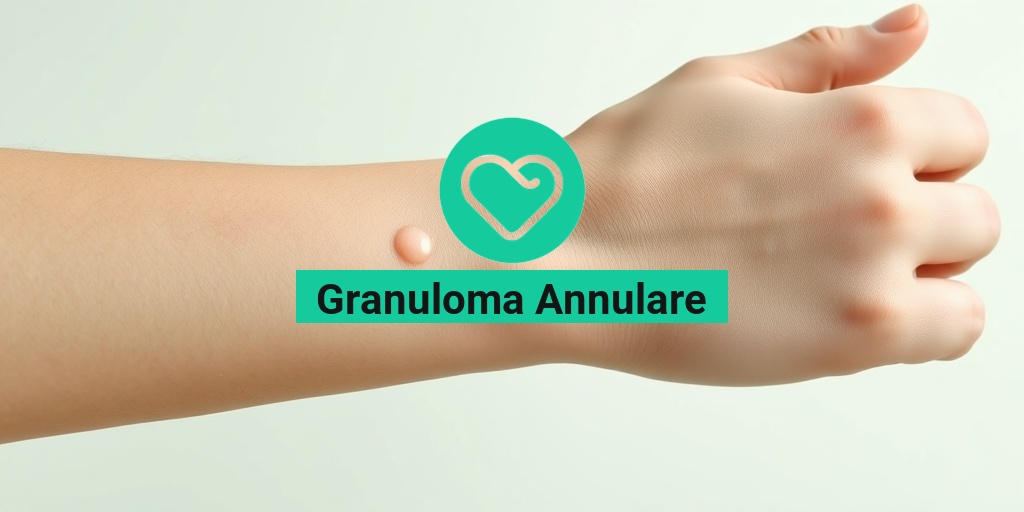What Is High Potassium?
When we talk about high potassium, we’re referring to a condition where the levels of potassium in the blood are higher than normal. But what exactly is potassium, and why is it so important for our bodies?
The Role of Potassium in the Body
Potassium is an essential mineral that plays a crucial role in various bodily functions. It helps regulate fluid balance, blood pressure, and supports healthy muscle and nerve function. In fact, potassium is the third most abundant mineral in the body, and it’s necessary for maintaining proper heart function, transmitting nerve impulses, and promoting bone health.
What Constitutes High Potassium?
A normal potassium level in the blood ranges from 3.5 to 5.5 milliequivalents per liter (mEq/L). When potassium levels exceed 5.5 mEq/L, it’s considered high. Mild hyperkalemia, the medical term for high potassium, is typically defined as a level between 5.6 and 6.0 mEq/L, while severe hyperkalemia is characterized by levels above 6.0 mEq/L.
High Potassium Symptoms
High potassium levels can cause a range of symptoms, some of which can be severe. If you’re experiencing any of the following, it’s essential to consult with your healthcare provider:
Mild Symptoms
- Fatigue: High potassium can cause feelings of weakness, lethargy, and a general lack of energy.
- Palpitations: You may experience irregular heartbeats, fluttering, or pounding sensations in your chest.
- Muscle weakness: High potassium can lead to muscle weakness, cramping, or twitching.
- Numbness or tingling: You may experience numbness or tingling sensations in your extremities, such as your hands or feet.
Severe Symptoms
- Abnormal heart rhythms: High potassium can cause life-threatening heart arrhythmias, which can lead to cardiac arrest.
- Paralysis: In severe cases, high potassium can cause muscle paralysis, which can affect your ability to breathe.
- Respiratory failure: High potassium can lead to respiratory failure, which can be fatal if left untreated.
If you’re experiencing any of these symptoms, it’s crucial to seek medical attention immediately. High potassium can be a life-threatening condition, and prompt treatment is essential to prevent complications.
Remember, if you have any concerns about your potassium levels or symptoms, consult with your healthcare provider or visit Yesil Health AI for evidence-based health answers. 🏥
Stay tuned for the next part of this article, where we’ll explore the causes of high potassium and how to manage it through diet and lifestyle changes! 🥗

Causes of High Potassium
High potassium, also known as hyperkalemia, occurs when the level of potassium in the blood exceeds 5.5 milliequivalents per liter (mEq/L). While potassium is an essential mineral for various bodily functions, excessive levels can lead to serious health complications. So, what causes high potassium?
Medications
Certain medications can increase potassium levels in the blood. These include:
- ACE inhibitors: Medications used to treat high blood pressure, such as lisinopril, can increase potassium levels.
- Potassium-sparing diuretics: Diuretics like spironolactone can reduce potassium excretion, leading to high levels.
- : Nonsteroidal anti-inflammatory drugs like ibuprofen and naproxen can increase potassium levels.
Kidney Problems
Kidney dysfunction or disease can impair the body’s ability to remove excess potassium, leading to high levels. This includes:
- Kidney failure: When the kidneys are unable to filter waste and excess potassium, levels can rise.
- Kidney disease: Conditions like chronic kidney disease can affect the kidneys’ ability to regulate potassium levels.
Diet
A diet rich in potassium can contribute to high levels. Foods that are particularly high in potassium include:
- Fruits: Bananas, avocados, and apricots are all high in potassium.
- Vegetables: Leafy greens like spinach and kale, as well as sweet potatoes, are rich in potassium.
- Legumes: White beans, lentils, and chickpeas are all high in potassium.
Other Causes
Other factors that can contribute to high potassium levels include:
- Adrenal insufficiency: A condition where the adrenal glands do not produce enough hormones, leading to high potassium levels.
- Tissue damage: Severe tissue damage, such as from a crush injury, can release potassium into the bloodstream.
- Red blood cell destruction: Certain conditions, like hemolytic anemia, can cause red blood cells to break down, releasing potassium into the bloodstream.
High Potassium Diagnosis
Diagnosing high potassium typically involves a combination of physical examination, medical history, and laboratory tests. Here are some ways to diagnose high potassium:
Physical Examination
A healthcare professional will perform a physical examination to look for signs of high potassium, such as:
- Abnormal heart rhythms: An irregular heartbeat or palpitations can be a sign of high potassium.
- Muscle weakness: Weakness or paralysis can occur due to high potassium levels.
Laboratory Tests
Laboratory tests are used to confirm high potassium levels. These include:
- Blood tests: A blood test can measure potassium levels in the blood.
- Electrolyte panel: This test measures the levels of various electrolytes, including potassium, in the blood.
- Electrocardiogram (ECG): An ECG can help identify abnormal heart rhythms associated with high potassium.
Early diagnosis and treatment of high potassium are crucial to preventing serious health complications. If you suspect you or someone else may have high potassium, seek medical attention immediately ⚕️.

High Potassium Treatment
When it comes to treating high potassium levels, it’s essential to address the underlying cause and take steps to reduce potassium levels in the blood. Here are some common treatment options:
Medications
In some cases, medications may be prescribed to help lower potassium levels. These can include:
- Diuretics: These medications help increase urine production, which can help remove excess potassium from the body.
- Potassium-binding resins: These medications work by binding to potassium in the gut and preventing its absorption into the bloodstream.
- Beta-blockers: In some cases, beta-blockers may be prescribed to help slow down the heart rate and reduce potassium levels.
Dietary Changes
Dietary changes can play a significant role in reducing potassium levels. A healthcare professional may recommend:
- A low-potassium diet: This involves limiting or avoiding foods that are high in potassium, such as bananas, avocados, and spinach.
- Avoiding certain medications: Certain medications, such as ACE inhibitors and potassium-sparing diuretics, can increase potassium levels.
Other Treatment Options
In severe cases of hyperkalemia (high potassium levels), hospitalization may be necessary to receive:
- Intravenous calcium gluconate: This can help counteract the effects of high potassium levels on the heart.
- Intravenous insulin and glucose: This can help drive potassium back into cells and reduce levels in the blood.
- Hemodialysis: In severe cases, hemodialysis may be necessary to remove excess potassium from the blood.
High Potassium Diet
A high potassium diet can be beneficial for individuals who are at risk of developing hypokalemia (low potassium levels). However, for those with hyperkalemia, it’s essential to limit or avoid foods that are high in potassium. Here are some key foods to include or avoid:
Foods to Include
If you’re looking to increase your potassium intake, consider adding the following foods to your diet:
- Fruits: Apricots, citrus fruits, and avocados are all high in potassium.
- Leafy greens: Spinach, kale, and collard greens are all rich in potassium.
- Fatty fish: Fatty fish like salmon and mackerel are not only high in potassium but also rich in omega-3 fatty acids.
Foods to Avoid or Limit
If you have hyperkalemia, it’s essential to limit or avoid the following foods:
- Bananas: While bananas are a good source of potassium, they can exacerbate high potassium levels.
- Legumes: Legumes like white beans, lentils, and chickpeas are high in potassium and should be limited or avoided.
- Nuts and seeds: Many nuts and seeds, including almonds, pumpkin seeds, and sunflower seeds, are high in potassium.
Remember to always consult with a healthcare professional before making any significant changes to your diet. They can help you develop a personalized plan that takes into account your individual needs and health status. 💊

Foods High in Potassium
When it comes to maintaining a healthy lifestyle, getting enough potassium in your diet is crucial. Potassium is an essential mineral that plays a vital role in various bodily functions, such as regulating blood pressure, promoting bone health, and supporting muscle function. 🏋️♀️
A diet rich in potassium can help reduce the risk of chronic diseases like heart disease, stroke, and kidney disease. But which foods are high in potassium? Let’s dive in and explore the top potassium-rich foods you should include in your diet! 🍴
Fruits High in Potassium
Fruits are an excellent source of potassium, and some of the highest potassium-containing fruits include:
- Bananas: One medium-sized banana contains around 422 milligrams of potassium.
- Avocados: One medium-sized avocado contains around 708 milligrams of potassium.
- Mangoes: One cup of sliced mango contains around 442 milligrams of potassium.
- Papayas: One medium-sized papaya contains around 555 milligrams of potassium.
Vegetables High in Potassium
Vegetables are another great source of potassium, and some of the highest potassium-containing vegetables include:
- Spinach: One cup of cooked spinach contains around 840 milligrams of potassium.
- Sweet Potatoes: One medium-sized sweet potato contains around 542 milligrams of potassium.
- Broccoli: One cup of cooked broccoli contains around 456 milligrams of potassium.
- Carrots: One cup of cooked carrots contains around 422 milligrams of potassium.
Other High Potassium Foods
In addition to fruits and vegetables, there are other foods that are high in potassium, including:
- Fish: Fatty fish like salmon and tuna are high in potassium, with a 3-ounce serving containing around 534 milligrams.
- Legumes: Legumes like white beans, lentils, and chickpeas are high in potassium, with a 1-cup serving containing around 1,128 milligrams.
- Nuts and Seeds: Almonds, pumpkin seeds, and sunflower seeds are all high in potassium, with a 1-ounce serving containing around 160-200 milligrams.
High Potassium in Blood Test Results
When you get a blood test, your healthcare provider may check your potassium levels to ensure they’re within a healthy range. But what does it mean if your blood test results show high potassium levels? 🤔
A high potassium level in the blood is typically defined as above 5.5 milliequivalents per liter (mEq/L). This condition is known as hyperkalemia. 🚨
Causes of High Potassium in Blood
There are several reasons why your potassium levels may be high, including:
- Kidney problems: Kidney disease or kidney failure can lead to high potassium levels in the blood.
- Adrenal insufficiency: A condition where the adrenal glands don’t produce enough hormones, leading to high potassium levels.
- Certain medications: Certain medications like ACE inhibitors, potassium-sparing diuretics, and NSAIDs can increase potassium levels.
- Diet: Consuming large amounts of potassium-rich foods or supplements can lead to high potassium levels.
Symptoms of High Potassium in Blood
If you have high potassium levels in your blood, you may experience symptoms such as:
- Palpitations: Irregular heartbeats or palpitations can occur due to high potassium levels.
- Weakness: Muscle weakness or fatigue can be a sign of high potassium levels.
- Numbness or tingling: Numbness or tingling sensations in the extremities can occur due to high potassium levels.
If you’re concerned about your potassium levels or have questions about your blood test results, be sure to consult with your healthcare provider. They can help you determine the best course of action to get your potassium levels back to a healthy range. 💊

High Potassium: Frequently Asked Questions
Get answers to your most pressing questions about high potassium levels, symptoms, causes, and more!
What are the symptoms of high potassium?
High potassium levels can cause a range of symptoms, including:
- Weakness or fatigue
- Palpitations or irregular heartbeat
- Numbness or tingling in the extremities
- Muscle weakness or paralysis
- Abdominal cramps
- Vomiting or nausea
What causes high potassium levels?
High potassium levels can be caused by:
- Kidney disease or kidney failure
- Adrenal insufficiency
- Certain medications, such as ACE inhibitors or potassium-sparing diuretics
- Consuming high amounts of potassium-rich foods
- Dehydration or excessive sweating
What are high potassium foods to avoid?
If you have high potassium levels, it’s essential to limit or avoid foods that are high in potassium, such as:
- Bananas
- Avocados
- Spinach
- Beets
- White beans
- Sweet potatoes
How is high potassium in blood diagnosed?
High potassium levels in the blood are typically diagnosed through a blood test, which measures the level of potassium in your blood.
What are the treatment options for high potassium?
Treatment for high potassium levels usually involves addressing the underlying cause, such as:
- Medications to lower potassium levels
- Dialysis to remove excess potassium from the blood
- Lifestyle changes, such as reducing potassium intake or increasing fluid intake
Can high potassium cause cardiac arrest?
Yes, high potassium levels can cause cardiac arrest in severe cases. It’s essential to seek medical attention immediately if you experience symptoms such as chest pain, shortness of breath, or palpitations.
How can I lower my potassium levels naturally?
To lower potassium levels naturally, try:
- Drinking plenty of water to stay hydrated
- Reducing potassium-rich foods in your diet
- Incorporating potassium-lowering foods, such as lemons or apple cider vinegar
- Exercising regularly to improve overall health
Remember to consult with your healthcare provider before making any significant changes to your diet or treatment plan.




